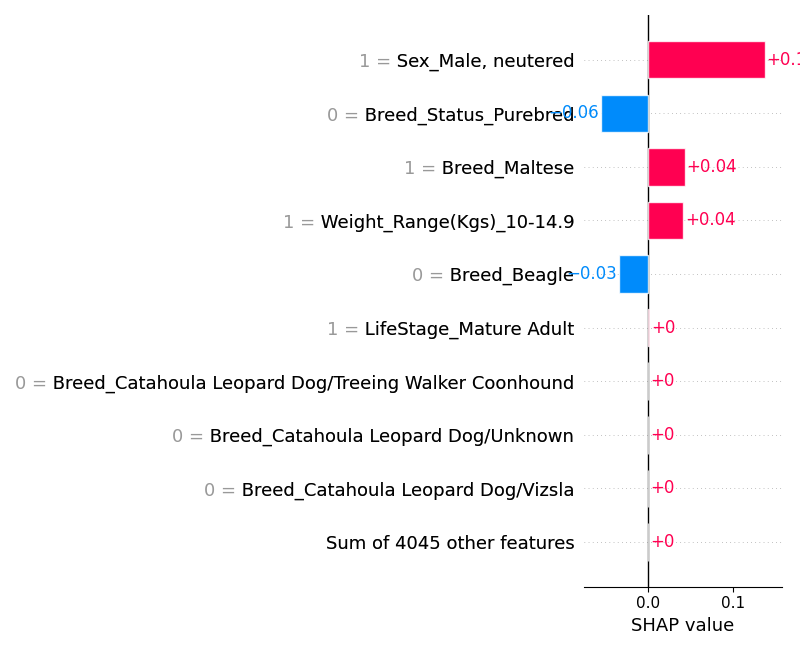Neo’s Legacy – Predicting Congenital Risk in Dogs with AI
Neo came into our lives as a surprise birthday gift for our son—a gentle, affectionate Maltese puppy who quickly became the heart of our home. His presence was especially comforting during the early days of the COVID-19 pandemic, when our daily walks and quiet routines with him became moments of reflection and bonding.
In October 2020, when Neo was just two years old, we began noticing subtle changes in his behavior and energy. A visit to the emergency vet confirmed a devastating diagnosis: congenital liver disease. Due to pandemic restrictions, our time with him that night was limited. Despite every effort, we lost him.
Neo’s passing left a profound void. In our grief, we found ourselves asking: What if we had known sooner? That question became the seed for this project—a tool designed to raise early awareness of congenital conditions in dogs. This free app is part of Breaking Barriers – Open Innovation Insights, an initiative focused on making AI tools accessible and impactful for everyday lives.
Neo’s Legacy: Congenital Predictor – A Companion Tool for Awareness
Neo’s Legacy: Congenital Predictor is a free, AI-powered tool that estimates the likelihood of congenital disease in dogs based on traits like breed, weight, life stage, and more. It is not a diagnostic system, but rather a supportive resource—one intended to foster awareness and help pet parents have informed discussions with their veterinarians.
This is the first of many tools under development, with Neo—our beloved companion—as both co-founder and inspiration.
Why Congenital Risk Matters
Congenital conditions are present at birth and are often influenced by genetic or developmental factors. Some breeds may carry higher risk profiles than others. This tool highlights those patterns statistically, aiming to support better understanding—not clinical diagnosis.
How It Works
The model is trained on a carefully curated dataset of over 43,000 records using a Balanced Random Forest Classifier. The following traits are used as inputs:
- Breed and breed status
- Sex
- Weight range (in kilograms)
- Life stage
- Breed size
The tool returns:
- A likelihood label (e.g., likely/unlikely)
- A confidence level (High, Medium, Low)
- A probability score
- A plain-language interpretation
- A SHAP plot that illustrates feature influence on the prediction
Data Source:
Dog Aging Project (2024). 2023 Curated Data Open Access Release, version 1.0.
Data accessed via Terra at the Broad Institute of MIT and Harvard.
Model Highlights
| Metric | Value |
|---|---|
| F1 Score | 0.845 |
| Recall | 0.987 |
| Precision | 0.738 |
The model uses a low threshold (0.05) to prioritize recall, aiming to reduce the chance of missing true positive cases.
Sample Output
Type: Mixed Breed: Maltese
Sex: Male, neutered
Weight Range (kg): 10–14.9
Size: Medium
Life Stage: Mature Adult
✅ Possible Congenital Condition — Probability: 17.3%
🟠 Moderate Probability: This prediction indicates a moderate risk (17.3%) of a congenital condition, which is above the 5% threshold. It’s recommended to schedule a non-urgent check-up or consult your veterinarian if you’ve noticed any unusual behaviors or symptoms.
The chart below shows which traits had the biggest impact on this prediction.
Traits with positive values made the dog seem more likely to have a congenital disease.
Traits with negative values made it seem less likely.

Understanding the SHAP Plot
The SHAP (SHapley Additive exPlanations) plot provides a transparent look into how each input trait influenced the model’s prediction—offering clarity rather than a black-box experience.
Confusion Matrix
| Predicted No | Predicted Yes | |
|---|---|---|
| Actually No | 8,063 | 4,360 |
| Actually Yes | 158 | 12,274 |
This model is tuned to minimize false negatives, which may lead to some false positives. These predictions are meant to be indicators, not definitive conclusions.
Use With Care
- This is not a diagnostic tool
- Designed to raise awareness, not replace medical expertise
- Confidence levels offer additional interpretive guidance
We encourage users to use this tool as a thoughtful companion—helpful in prompting timely care and conversation.
In Memory of Neo
This project honors Neo, who brought joy, comfort, and connection to our lives. After his passing, our rescue dog Bailey joined our family, continuing to teach us about love, healing, and the quiet ways dogs enrich our lives.
This app marks our first public release—developed with care, grounded in science, and created with love. More tools are on the way, all built to support the health and happiness of our animal companions.
You can explore the AI tool here:
Neo’s Legacy: Congenital Predictor
One of the AI Innovations for Furry Friends from
Breaking Barriers – Open Innovation Insights













